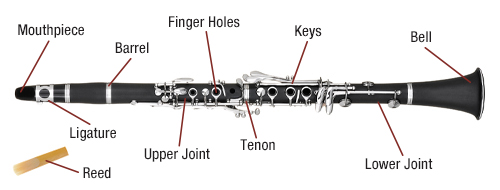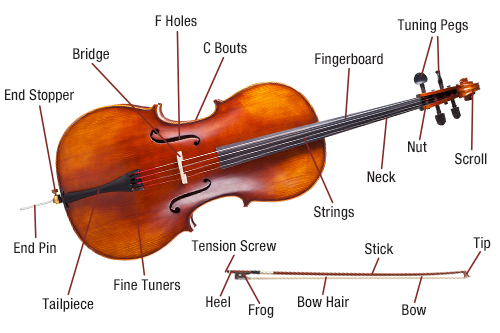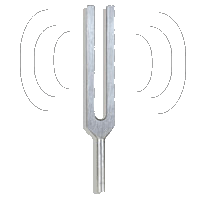Instruments
Brass Instruments
Brass instruments make use of a mouth piece which allows the musician to push air through an instrument and series of tubes, causing the bell of the instrument to vibrate. The bell vibrates the air and creates sound waves. The sound can be altered in two ways. One, the musician can physically vibrate their lips faster or slower or two, the musician can use a series of valves/slides to tighten/relieve air flow and create higher/lower pitches.

source:https://www.mfsf.org.uk/images/jpgs/trumpet_img.jpg
Woodwind Instruments
Woodwind instruments use sensitive reeds held by a ligature to vibrate a mouthpiece. This vibration causes sound to be produced out of the end/bell of the instrument. A reed is usually made of wood and has to be positioned perfectly in order to create the correct sound. Musicians can control the amplitude on these instruments by supplying more air through the instrument. They can also change the frequency through a series of keys that cover up certain holes on the body of the instrument. By covering these holes, the pressure needed to vibrate the mouth piece and bell/end of instrument increases or decreases, thus altering the pitch.

source:http://musicpartnership.com.au/wp-content/uploads/2014/08/clarinet-diagram-image.jpg
String Instruments
String instruments use stick-slip friction from rosin applied to a bow to make a long string vibrate. The amplitude can be changed by applying more force to the bow which applies more force to the string. This can be accomplished either by physically apply more force with you arm or tightening the tension in the bow string. Alternatively, a more rigid surface can be used to to create more friction between the bow and the string but this makes controlling the pitch or frequency harder.
Frequency is mainly controlled by the fingerboard which the musician uses to move their fingers over certain locations and apply pressure. This shortens the distance in which the sound wave can oscillate thus creating a tighter frequency pattern and higher pitch. Frequency is also determined by the diameter of the string, the smaller the diameter the higher the pitch, the larger the diameter, the lower the pitch. Given an applied force of equal proportion to two strings, the string that has a larger diameter will vibrate slower than the string that has a smaller diameter. This is because the larger string is more massive than the smaller string and therefore needs more force to produce a sound wave of equal frequency to that of the small string.

source:http://musicpartnership.com.au/wp-content/uploads/2014/08/cello-diagram-image.jpg
Quick Links
Vibration
Music
source:http://www.one-mind-one-energy
.com/images/tuning_fork.png
Tristan Van Cise
Physics 211
Fall 2016
David Newman
Website Project
